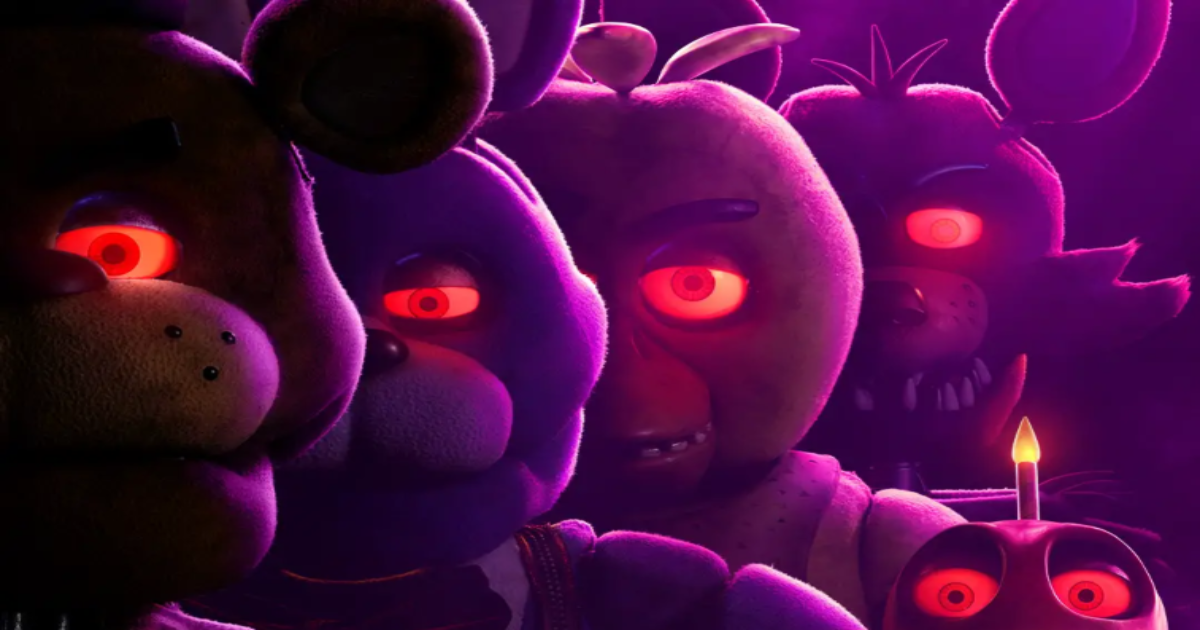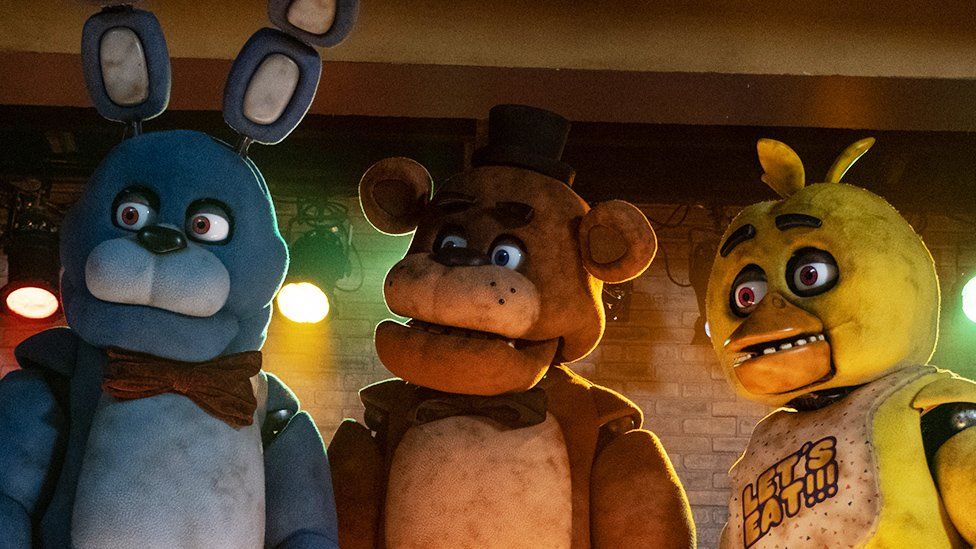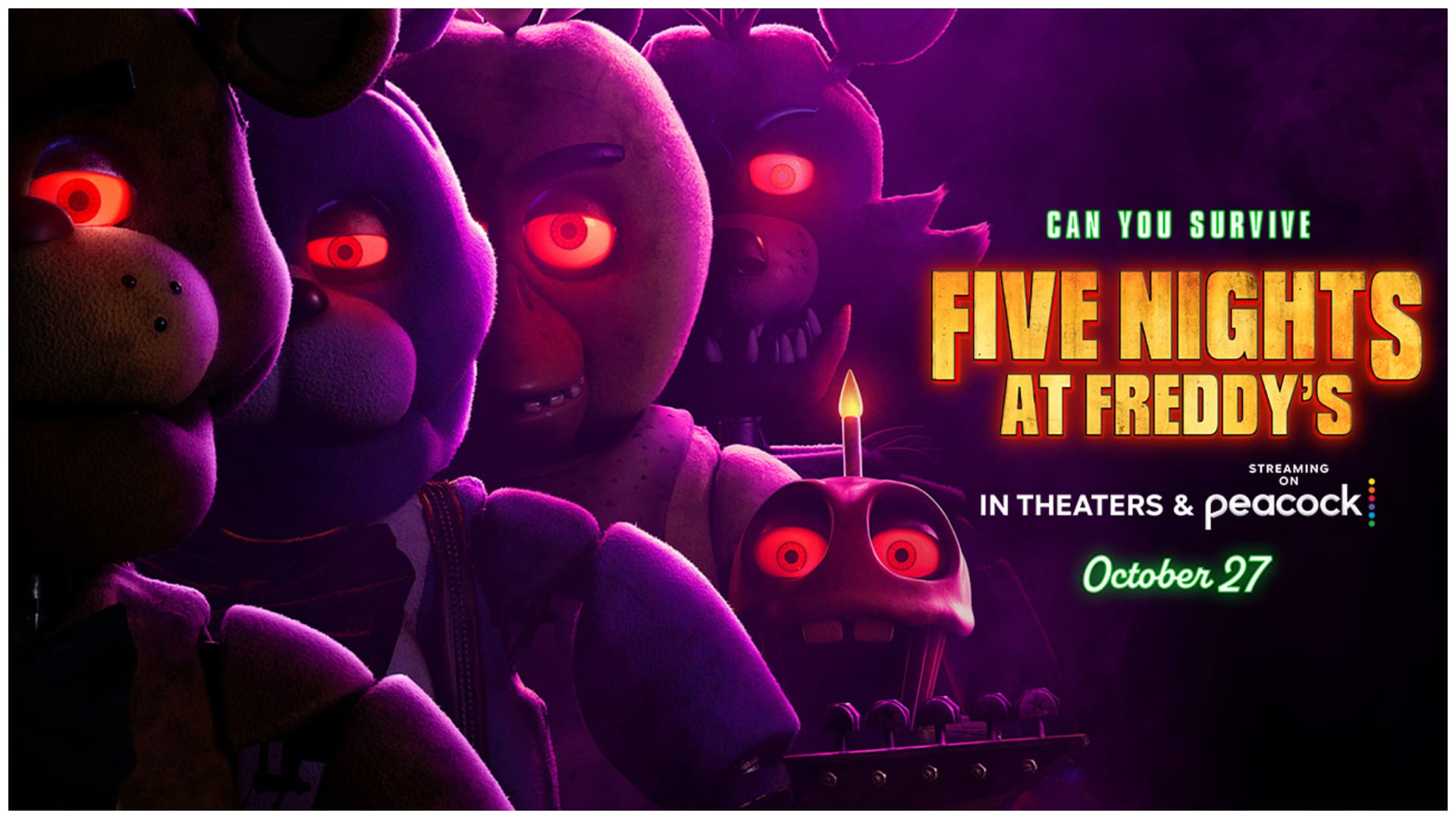Visual and Audio Elements
The Five Nights at Freddy’s movie successfully translates the unsettling atmosphere of the game into a cinematic experience, relying heavily on a potent blend of visuals and audio. The film masterfully uses shadows, lighting, and set design to create a constant sense of unease, while the sound design expertly manipulates silence and jarring noises to keep the audience on the edge of their seats. This synergy between sight and sound is what elevates the movie beyond a simple horror flick and into a genuinely terrifying experience.
The film’s visual style leans heavily into a gritty, almost hyper-realistic aesthetic. The animatronics themselves are designed to be both alluring and deeply disturbing; their movements are jerky and unnatural, their eyes unnervingly vacant. This contrasts sharply with the often sterile and brightly lit settings, such as the pizzeria, which only serve to highlight the lurking threat. The use of darkness is particularly effective, creating an environment where anything could be hiding just out of sight. This creates a palpable sense of dread, forcing the viewer to actively participate in deciphering the visual cues to anticipate danger.
Sound Design and Music, 5 nights at freddy’s movie review
The sound design is arguably as important as the visuals in building the film’s suspense. Silence is used as a powerful tool, often stretching for long periods before being abruptly shattered by a sudden, unsettling noise. This creates a constant state of anticipation, leaving the audience breathlessly awaiting the next scare. The use of low, rumbling sounds, combined with high-pitched metallic screeches, creates a disorienting and unsettling soundscape that perfectly mirrors the psychological horror of the source material. The music itself is largely sparse, but when it does appear, it is often discordant and unsettling, amplifying the already tense atmosphere.
Memorable Scene: The First Encounter
The scene where Mike Schmidt first encounters the animatronics in the back room is a masterclass in visual and audio synergy. The room is shrouded in near-total darkness, illuminated only by the faint glow of the security cameras and the eerie, pulsating light emanating from the animatronics’ eyes. The silence is broken only by the rhythmic whirring of the animatronics’ internal mechanisms, a sound that is both unsettlingly mechanical and strangely organic. As the animatronics begin to move, the sound intensifies, punctuated by the metallic creaks and groans of their aging bodies. The camera work is deliberately shaky and claustrophobic, mimicking Mike’s own rising panic. The visual claustrophobia is perfectly complemented by the increasingly frantic sound design, building to a crescendo of terrifying noise just before the animatronics lunge at the protagonist. The scene expertly utilizes sound to amplify the visual horror, creating a truly unforgettable moment of pure cinematic terror.
Comparison to the Game Franchise

The Five Nights at Freddy’s movie, while a visually stunning and occasionally terrifying experience, takes some significant liberties with the source material’s established lore and gameplay mechanics. The film’s narrative structure differs considerably from the episodic, survival-horror gameplay loop that defined the games, creating a unique viewing experience that will resonate differently with fans familiar with the intricacies of the game franchise. This comparison will delve into the key similarities and differences, exploring the impact of these choices on the overall reception of the film.
The movie’s narrative unfolds as a linear story, focusing on a singular, albeit compelling, narrative arc. This contrasts sharply with the games, which present a series of self-contained nights, each building suspense and revealing small pieces of the larger, fragmented narrative through environmental storytelling and cryptic clues. The film, therefore, chooses a more direct, expository approach to world-building and character development, which, while effective in its own right, sacrifices the element of mystery and gradual revelation that defined the games’ unique charm.
Narrative Structure and Gameplay Mechanics
The games rely heavily on strategic resource management and precise timing within a confined space. Players must monitor security cameras, conserve power, and strategically use limited resources to survive the night. The movie, on the other hand, features a more traditional horror narrative with elements of chase sequences and jump scares. The tension in the film is built through atmosphere and character interactions rather than the meticulous planning required in the games. This shift in emphasis changes the overall experience, transforming the player’s active participation into a passive observation of events.
Faithfulness to Source Material
The movie successfully captures the unsettling atmosphere and iconic animatronics of the games. The designs of Freddy Fazbear, Bonnie, Chica, and others remain largely faithful to their game counterparts, evoking a sense of nostalgia and familiarity for longtime fans. However, the movie’s plot deviates significantly from the established game lore, creating a new canon that may not satisfy those seeking a direct adaptation of a specific game’s storyline. The movie essentially reimagines the existing narrative, using familiar elements to tell a new story.
Key Differences and Their Impact
| Movie | Game |
|---|---|
| Linear narrative, focused on a single story arc | Episodic gameplay, with each night presenting a new challenge |
| Emphasis on atmosphere and jump scares | Emphasis on strategic resource management and survival |
| Direct character development and exposition | Environmental storytelling and cryptic clues |
| Reimagined lore and expanded universe | Fragmented lore, revealed gradually through gameplay |
| Focus on a specific set of characters and their relationships | Introduction of various characters and animatronics across multiple games |
The impact of these differences is multifaceted. While some viewers might appreciate the streamlined narrative and increased focus on character development, others may find the departure from the established lore disappointing. The movie’s success, therefore, hinges on its ability to engage a broader audience beyond the existing fanbase of the game franchise, while simultaneously appealing to the existing fanbase’s expectations.
Audience Reception and Critical Response: 5 Nights At Freddy’s Movie Review

The Five Nights at Freddy’s movie’s journey from pixelated terror to the big screen was a rollercoaster, both financially and critically. Its reception was a mixed bag, a chaotic animatronic orchestra of praise and pans, leaving audiences and critics debating whether it was a jump scare masterpiece or a missed opportunity. The film’s performance at the box office and the spectrum of opinions surrounding its plot, characters, and overall quality offer a fascinating case study in adaptation.
The movie’s box office performance was, to put it mildly, respectable. While it didn’t shatter records, it exceeded expectations for a video game adaptation, particularly one based on a franchise known for its niche appeal. This initial success suggests a broad audience engagement, beyond the dedicated fanbase of the game. However, this financial success doesn’t fully reflect the polarized critical reception.
Critical Reviews and Audience Opinions
Critical reviews of the Five Nights at Freddy’s movie ranged from lukewarm to enthusiastic. Some critics lauded the film’s commitment to the source material’s atmosphere, praising its effective use of jump scares and suspenseful pacing. They highlighted the impressive practical effects and the faithfulness to the game’s unsettling aesthetic. For example, a review in Variety magazine praised the film’s “masterful use of shadows and sound design to create a palpable sense of dread,” while another in The Hollywood Reporter acknowledged the “surprisingly effective adaptation of the game’s core mechanics.” Conversely, negative reviews often cited a lackluster plot, underdeveloped characters, and a reliance on cheap jump scares over genuine narrative tension. Common complaints focused on the film’s pacing, feeling too slow in parts and rushed in others. One prominent critic even labeled the film a “missed opportunity,” arguing that its potential for a deeper exploration of the lore was squandered in favor of predictable horror tropes. Audience opinions mirrored this division, with passionate online debates erupting across various platforms. Many long-time fans expressed satisfaction with the movie’s faithfulness to the source material, while others found it to be a generic horror film that failed to capture the essence of the game’s unique charm. The movie’s online rating aggregators reflect this polarization, with scores fluctuating wildly depending on the platform and user base.
Summary of Common Criticisms and Praise
The following points summarize the common criticisms and praise directed towards the Five Nights at Freddy’s movie. It’s important to remember that these are generalizations, and individual experiences will vary.
- Praise: Effective use of atmosphere and suspense, strong practical effects, faithfulness to the game’s aesthetic.
- Criticism: Weak plot and underdeveloped characters, reliance on cheap jump scares, uneven pacing.
- Praise: Successful box office performance, exceeding expectations for a video game adaptation.
- Criticism: Missed opportunity to explore the deeper lore of the game, predictable horror tropes.
- Praise: Successful recreation of the unsettling atmosphere of the games.
- Criticism: Disappointing for fans hoping for a more complex narrative.
Themes and Interpretations

The Five Nights at Freddy’s movie, while a thrilling rollercoaster of jump scares and animatronic mayhem, isn’t just about cheap thrills. It delves into surprisingly deep thematic territory, exploring the lasting impact of trauma, the seductive nature of nostalgia, and the blurred lines between reality and nightmare. The film cleverly uses familiar horror tropes to unpack complex emotional landscapes, leaving the audience with more to ponder than just the lingering scent of burnt pizza.
The movie’s exploration of childhood trauma is arguably its most potent theme. It cleverly weaves together the anxieties of childhood – the fear of the dark, the power of imagination, and the unsettling feeling of being watched – with the more adult themes of grief, guilt, and the enduring power of the past. The dilapidated Freddy Fazbear’s Pizza acts as a visual representation of a fractured psyche, its decaying animatronics mirroring the broken pieces of the protagonist’s past. The film doesn’t shy away from showing the brutal consequences of neglect and abuse, subtly hinting at the darker aspects of the characters’ backgrounds without explicitly spelling them out. This nuanced approach allows the audience to connect with the characters’ emotional turmoil on a deeper level.
Childhood Trauma and Fear
The film masterfully utilizes the familiar imagery of childhood nightmares to amplify the sense of dread. The unsettling movements of the animatronics, their unnerving smiles, and their relentless pursuit of the protagonist all tap into primal fears that resonate long after the credits roll. The movie doesn’t rely solely on jump scares; instead, it builds a pervasive atmosphere of unease, constantly reminding the audience of the vulnerability of its characters, particularly the child protagonist. The film’s success lies in its ability to tap into these universal fears, making the experience both terrifying and emotionally resonant. The unsettling soundscape, filled with creaks, whirs, and distorted children’s songs, further contributes to this atmosphere of constant unease, creating a truly immersive and disturbing experience. This deliberate construction of suspense elevates the film beyond a simple horror flick.
Interpretations of the Ending and its Implications
The ambiguous ending of the Five Nights at Freddy’s movie allows for multiple interpretations. One interpretation suggests that the protagonist has finally confronted and overcome his traumatic past, symbolically represented by his escape from the nightmarish world of Freddy Fazbear’s Pizza. Another, darker interpretation, proposes that the protagonist remains trapped within the cycle of trauma, his escape being merely a temporary reprieve from the horrors that continue to haunt him. The final shot, ambiguous in its presentation, allows the audience to draw their own conclusions, adding another layer of complexity to the film’s overall narrative. This open-ended conclusion reflects the lingering effects of trauma and the possibility of both healing and enduring suffering.
Symbolism and Imagery
The film is rich in symbolism, employing visual metaphors to enhance its thematic depth. Freddy Fazbear himself acts as a powerful symbol of repressed memories and the seductive allure of nostalgia. His seemingly innocent appearance belies a sinister undercurrent, reflecting the way seemingly harmless childhood experiences can mask deeper traumas. The decaying state of Freddy Fazbear’s Pizza mirrors the psychological deterioration of the protagonist, while the animatronics’ relentless pursuit symbolizes the inescapable nature of his past. The use of shadows, flickering lights, and claustrophobic spaces further enhances the film’s unsettling atmosphere, amplifying the sense of dread and vulnerability. The recurring motif of children’s songs, twisted and distorted, highlights the juxtaposition of innocence and horror, underscoring the film’s central themes.